Scottish Local Government Finance Statistics (SLGFS) 2018-19
Annual publication providing a comprehensive overview of financial activity of Scottish local authorities in 2018-19 based on authorities' audited accounts.
This document is part of a collection
Key Facts
How much did local authorities spend on services in 2018-19?
Revenue expenditure is the cost of delivering services each year.
Gross service expenditure is total expenditure on services in year minus internal transfers.
Gross service income is total income authorities receive from services, such as service specific grants or income generated through fees, etc.
Net revenue expenditure is gross service expenditure minus gross service income. It reflects the amount of service expenditure to be funded by general funding or reserves.
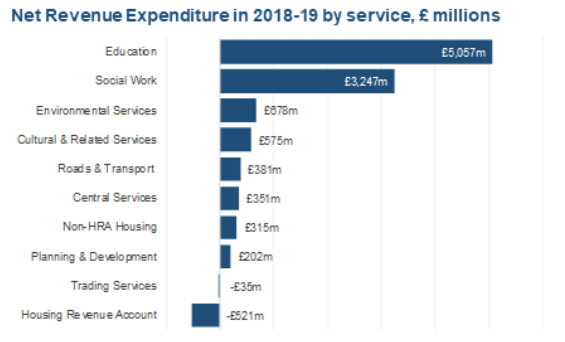
| Gross Service Expenditure |
£16,320 million |
| - Gross Service Income |
- £6,070 million |
| Net Revenue Expenditure |
£10,250 million |
How did local authorities fund services in 2018-19?
General funding is largely made up of the General Revenue Grant (GRG), Non-Domestic Rates (NDR) and Council Tax.
Local authorities use general funding to meet their net revenue expenditure on services and any other revenue expenditure that is not directly related to services, such as repayment of debt.
In 2018-19, local authorities’ expenditure exceeded their general funding. This deficit had to be funded from local authorities’ reserves.
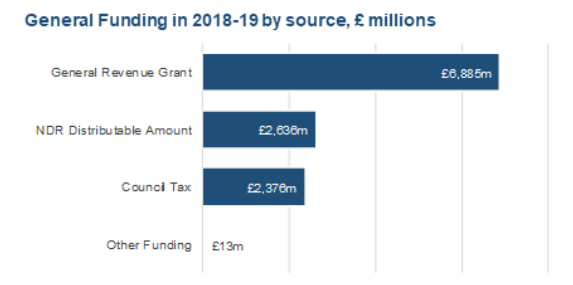
| Net Revenue Expenditure |
£10,250 million |
| + Non-Service Expenditure |
+ £1,713 million |
| - General Funding |
- £11,910 million |
| Deficit met from Reserves |
£53 million |
What was the value of capital investment in 2018-19?
Capital expenditure is expenditure that creates the buildings and infrastructure necessary to provide services, such as schools, flood defence, roads and vehicles.
Capital expenditure also includes capital grants or loans to third parties funded from borrowing.
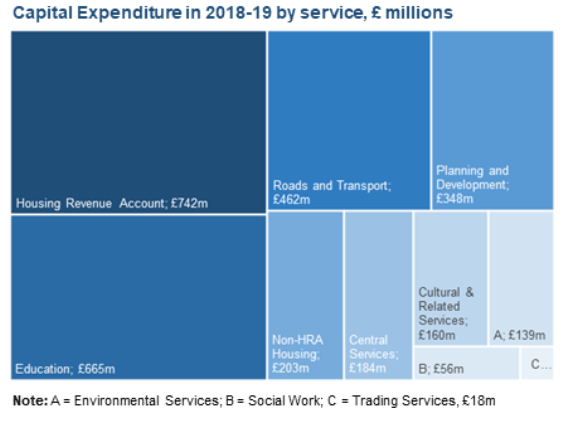
Total Capital Expenditure = £2,977 million
How did local authorities finance capital expenditure in 2018-19?
Local authorities can finance their total capital expenditure in a number of ways. The main sources of financing are:
- Borrowing;
- Capital grants from the Scottish Government, both a General Capital Grant and a number of specific grants.
- Using revenue reserves;
- Entering into credit arrangements, such as a finance lease or service concession arrangement.
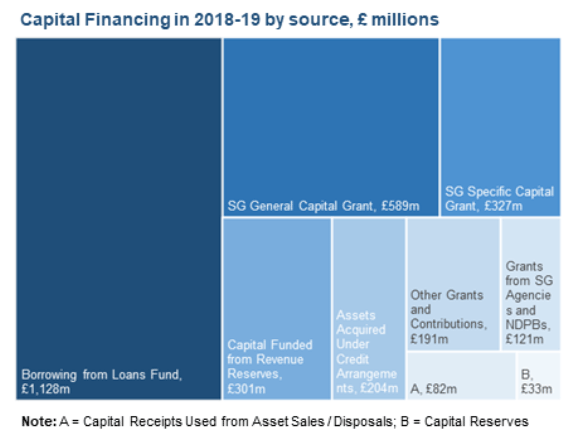
What reserves did local authorities have at 31 March 2019?
Usable reserves are local authorities’ surplus income from previous years. This can be used to finance future revenue or capital expenditure.
The General Fund is the main usable revenue reserve, although there are other reserves that authorities may be able to use.
There are also two usable capital reserves.
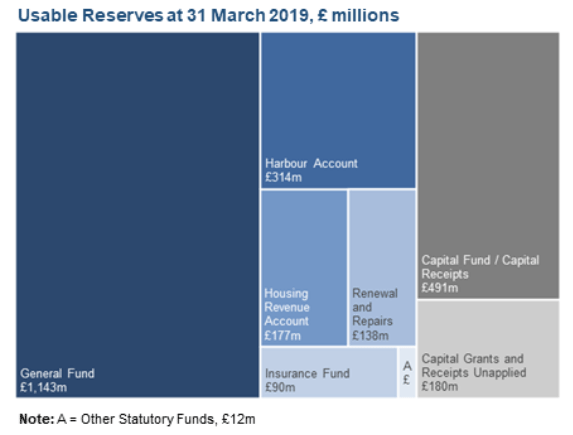
Total Usable Reserves = £2,546 million
What debt did local authorities have at 31 March 2019?
When a local authority borrows money or uses a credit arrangement to finance capital expenditure, a debt is created.
Local authorities have to repay this debt from future revenues.
In 2018-19, local authorities repaid £658 million of debt.
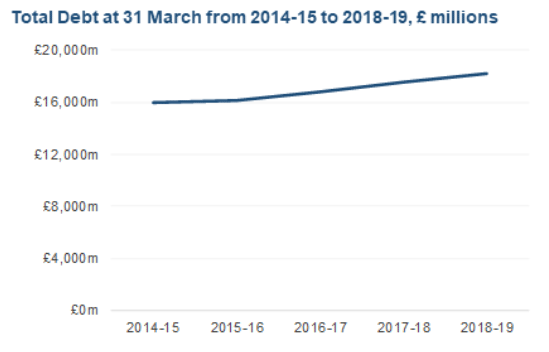
Total Debt in 2018-19 = £18,214 million
Contact
Email: lgfstats@gov.scot
There is a problem
Thanks for your feedback